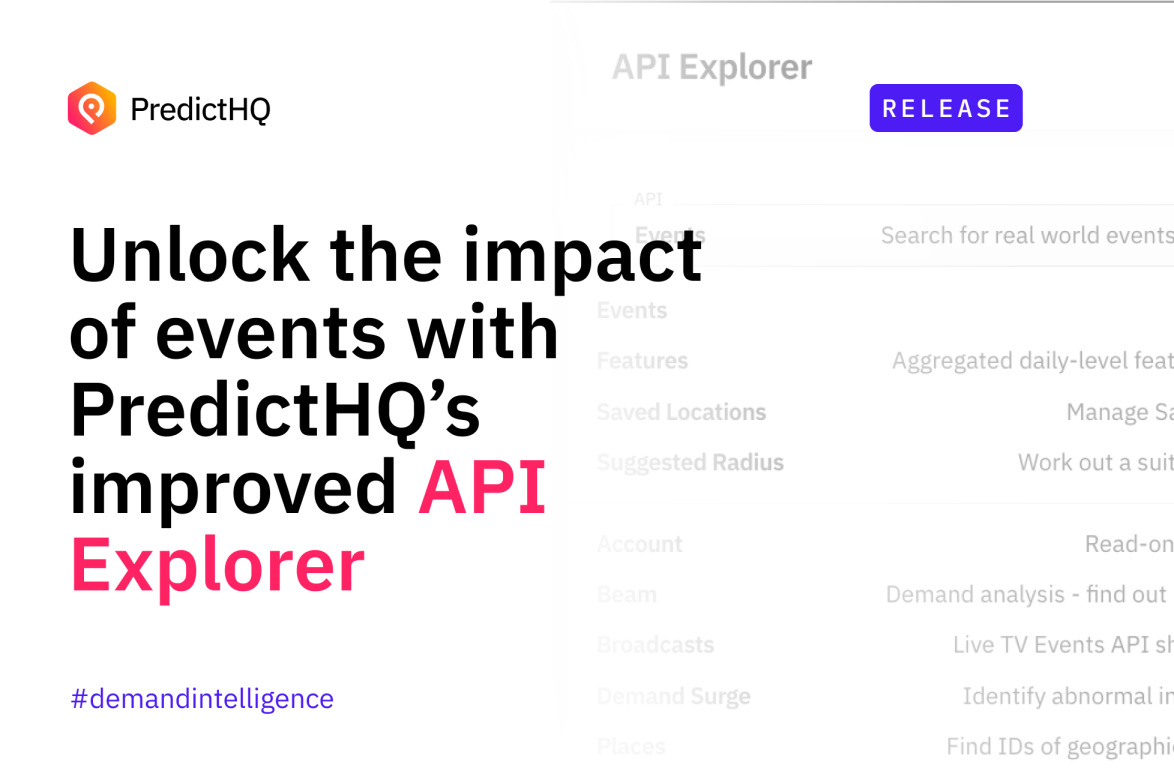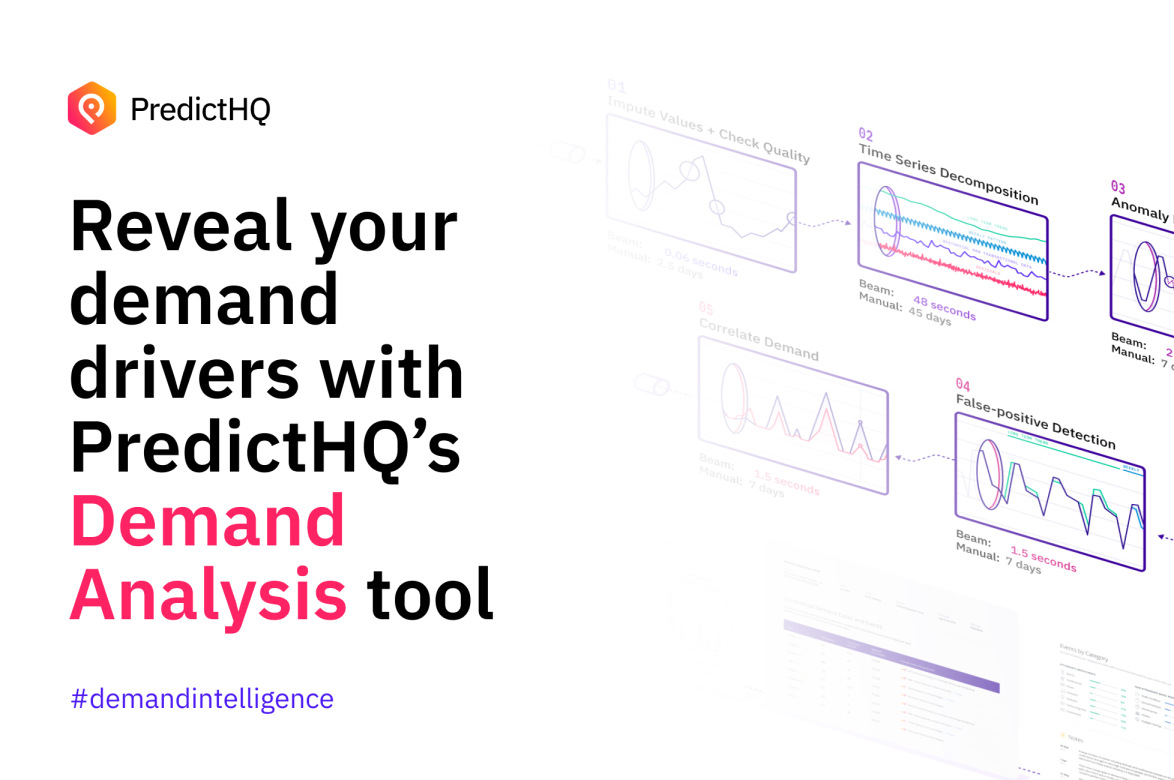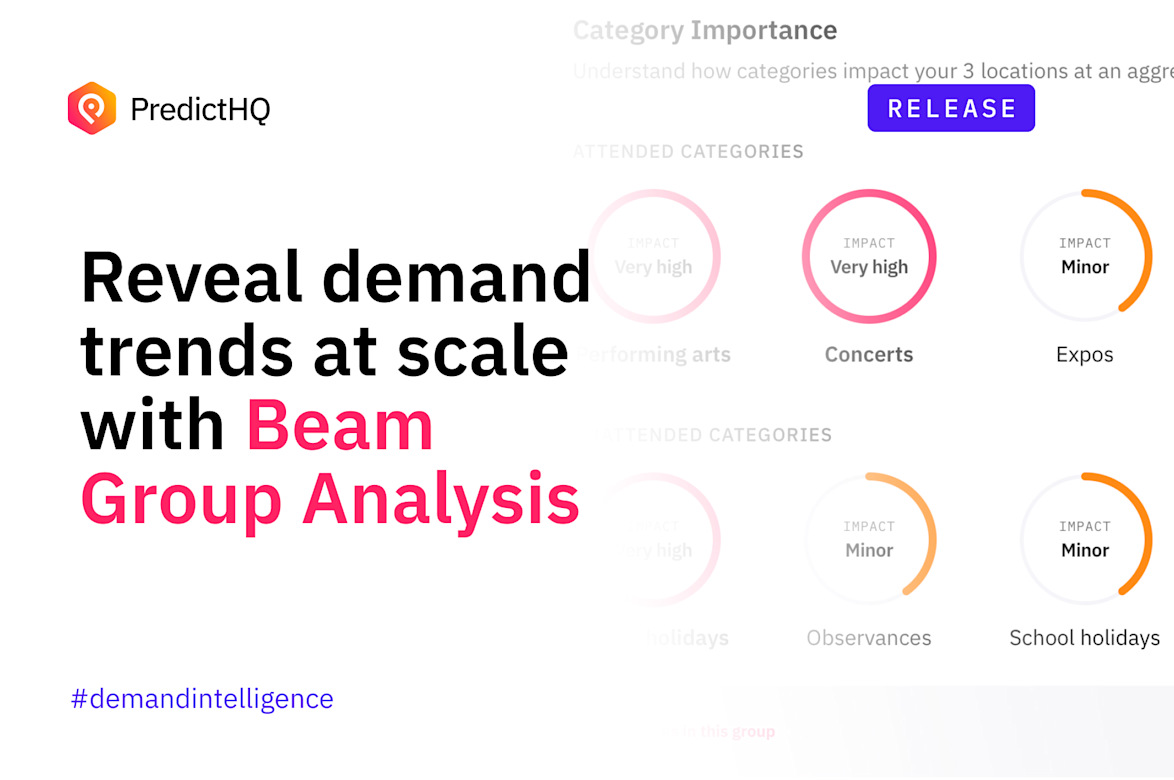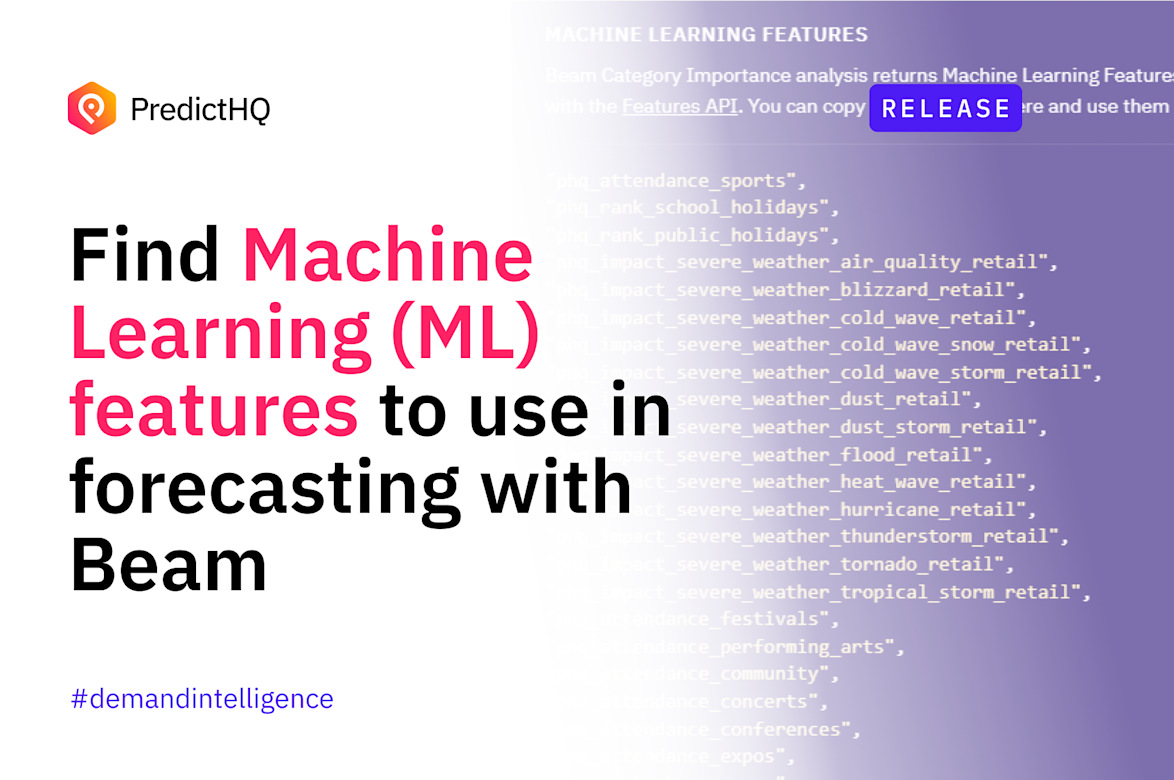Find Machine Learning (ML) features to use in forecasting with Beam

Find powerful Machine Learning (ML) features to boost your forecasting accuracy
Events are major catalysts of demand — and we find customers see significant improvements when updating their demand forecast to use events, with many customers getting 5-10% improvements in mean absolute percentage error (MAPE). Improved forecasting accuracy supports data-driven decision-making and enables more resilient and agile business strategies.
To add events to your forecast, you need to implement machine learning (ML) features for events. We have found that creating new ML features can be time-consuming and expensive. It can take a significant amount of time for data scientists, data engineers, and others. PredictHQ provides a toolkit to allow you to easily integrate pre-generated ML features with our Demand Analysis tool Beam and the Features API. We’ve made some updates to make this process even easier.
To do this quickly and easily, the first step is to upload your aggregated anonymous demand data into Beam in our web application or via the Beam API. Beam is our demand analysis tool which returns category importance results (also known as feature importance) for individual business locations as well as large groups.
Category importance uses our underlying feature importance API and is generated from an analysis of the relevance of the results of that API. Under the hood in Beam, we have a list of ML features and their p-values.
If you want to use the results to improve the accuracy of your models, you need to identify the ML features to use. We've added a link to "View ML Features" into Beam for individual analyses and group analysis. This allows you to get a list of ML features to use to train your models. You can copy these features and use them in code as per our feature engineering guide. The features are listed in order of the most impactful to least impactful (sorting by p-value).

Here’s how to use Beam and the Features API for your forecast in five simple steps:
Run Beam across your locations and create a group to get feature importance results to identify the top 5 most impactful features
In Control Center, open a Beam Analysis for your group and click on "VIEW ML FEATURES" to get a list of the most impactful features
Copy the ML features
Call the Features API (see the feature engineering guide) to download historical data for your locations to train your model
Train the ML Model
Integrate calls to the Features API in your pipeline and pass values to the model for the future-facing period they are forecasting
Deploy the updated model to production
If you want to see more details than what is returned by the "View ML Features" option in our web application, you can call Get Correlation Results in the Beam API.
Questions? Let us know, we’d love to hear from you.







